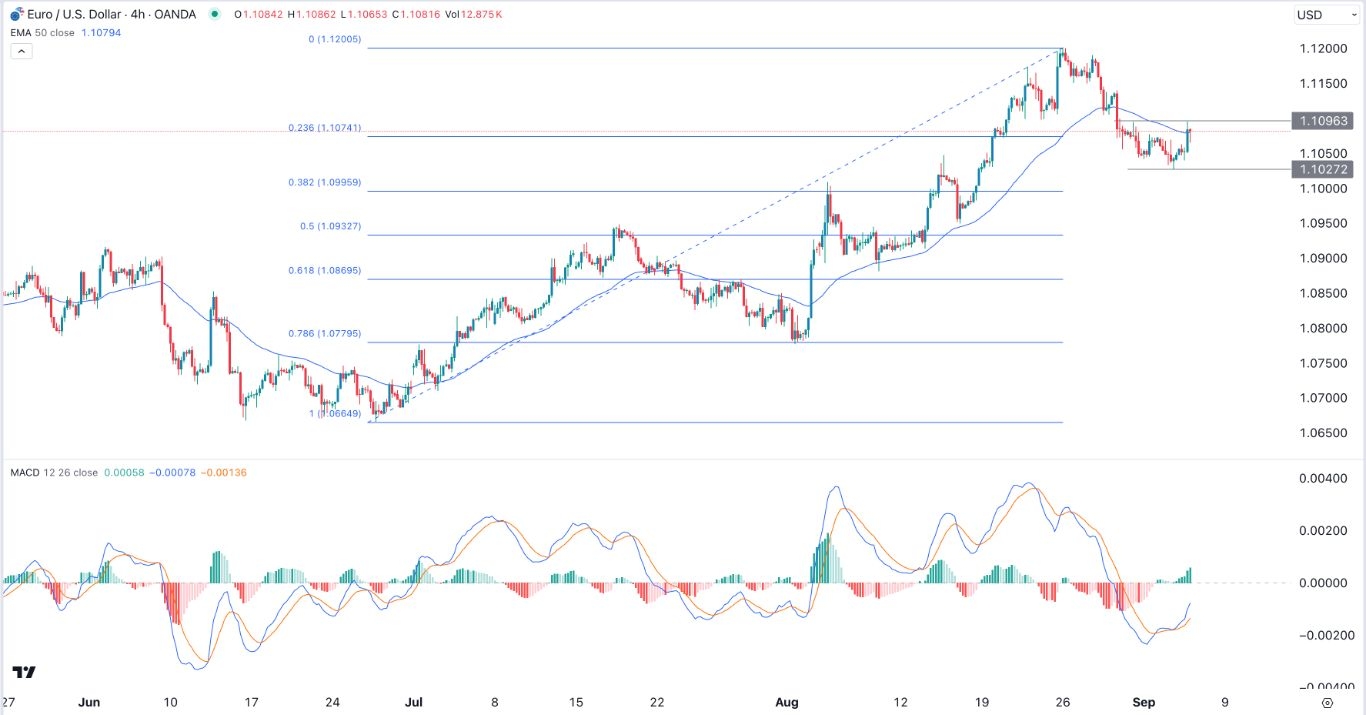Bullish view
- Buy the EUR/USD pair and set a take-profit at 1.1150.
- Add a stop-loss at 1.1030.
- Timeline: 1-2 days.
Bearish view
- Set a sell-stop at 1.1075 and a take-profit at 1.1000.
- Add a stop-loss at 1.1150.
The EUR/USD currency pair bounced back after the relatively weak European services PMI and US job vacancy numbers. It also rose after the Federal Reserve published the Beige Book report. It rose to 1.1095, higher than this week’s low of 1.1027.
US economic slowdown
The EUR/USD pair rose as the US dollar retreated after the latest jobs numbers. According to the Bureau of Labor Statistics, the number of job vacancies declined to 7.63 million, its lowest level in over two years.
That report came a day ahead of the latest ADP private payrolls data, which will shed light on the state of the labor market. According to Investing, the median estimate is that the sector created 143k jobs in August after adding 122k in the previous month.
Top Forex Brokers
The BLS will then release the official NFP data on Friday, which will set the tone on what to expect on September 18th when the Fed meets. Another set of weak numbers will point to a 0.50% rate cut while a better report will raise the odds of a 0.25% cut.
The EUR/USD pair also rose after the Fed released its Beige report, which shows the state of economic activity in key US regions. The report showed that economic activity was flat across most regions, with the employment rate falling in some places.
As a result, the yield curve turned positive, albeit briefly. The yield curve is a crucial tool that looks at the performance of government bonds. In an ideal situation, short-term bonds should have a lower yield than longer-term ones. However, in the past few years, the opposite has happened as concerns about the economy have remained.
Meanwhile, economic activity in Europe retreated slightly last month. Data by S&P showed that the bloc’s composite PMI dropped to 51 in August. In Germany, it dropped to 48.4, mostly because of the manufacturing sector.
EUR/USD technical analysis
Turning to the 4H chart, we see that the EUR/USD pair peaked at 1.1200 last week and then retreated to a low of 1.1027 this week. It has bounced back and moved slightly above the 23.6% Fibonacci Retracement point, which is drawn by connecting the lowest point in June and the highest level in August.
The pair is also hovering at the 50-day moving average while the two lines of the MACD have formed a bullish crossover. Therefore, the EUR/USD pair will likely remain in this range on Thursday as focus remains on Friday’s jobs numbers.
Ready to trade our free trading signals? We’ve made a list of the best European brokers to trade with worth using.


